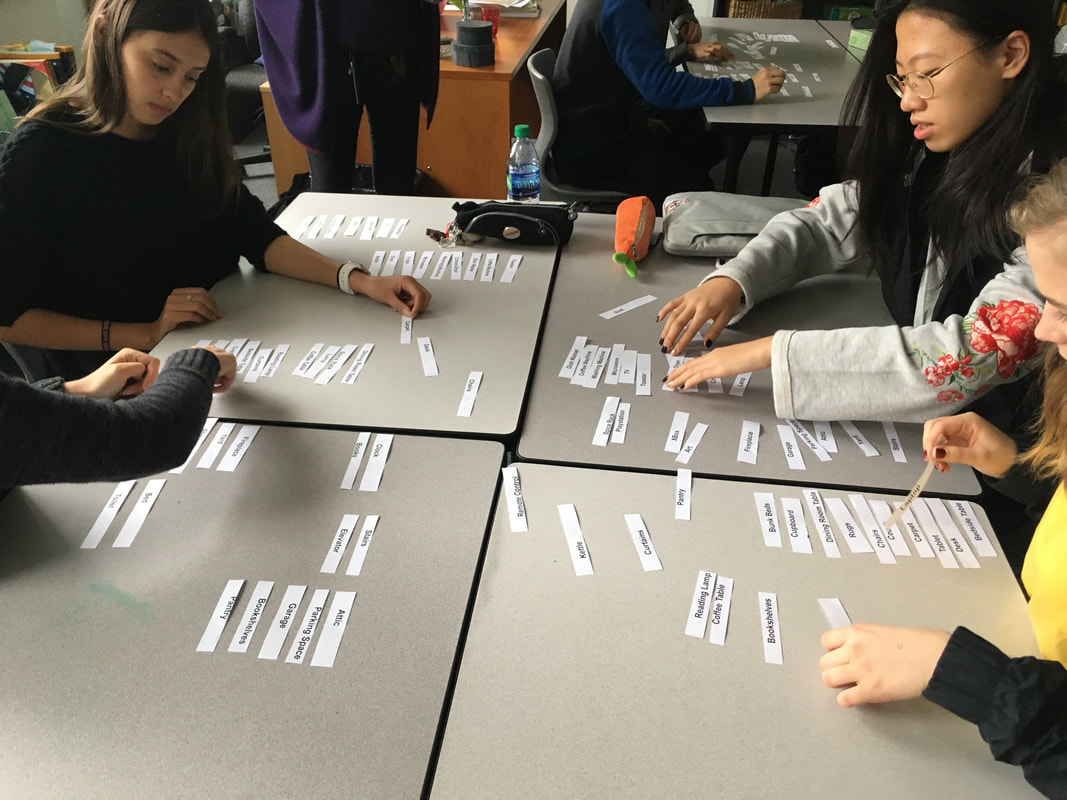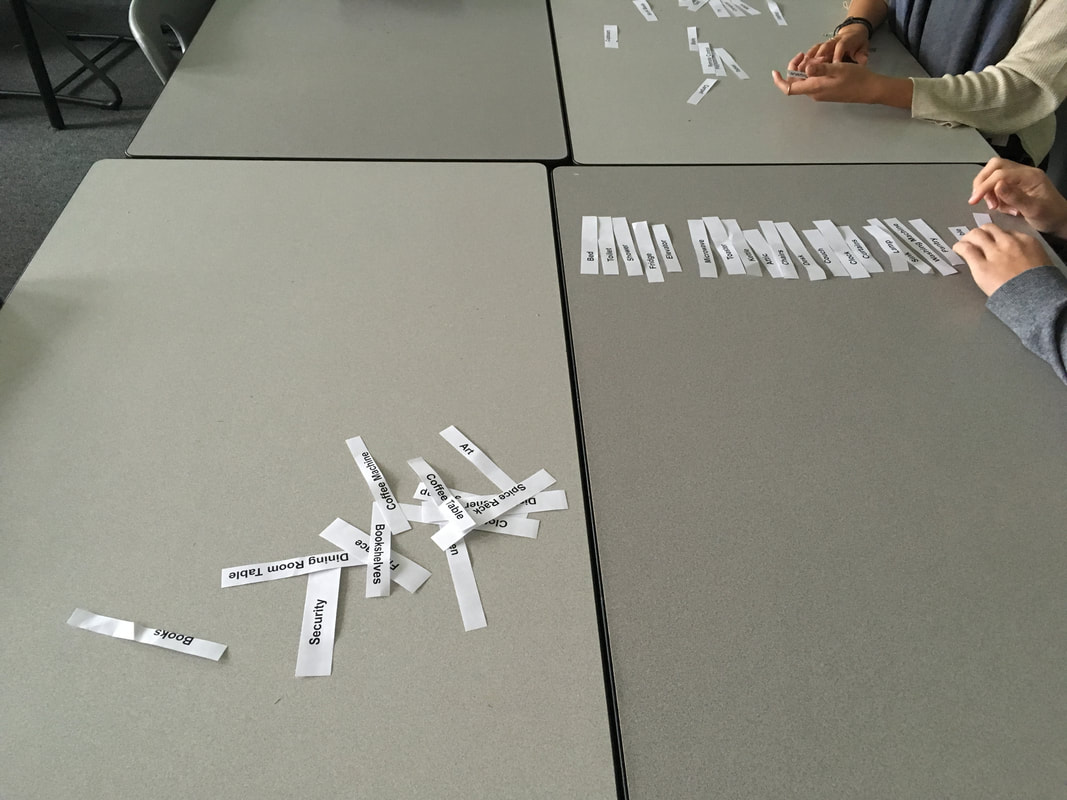|
I'm working with my colleague Helen to teach a unit on Living Spaces to her Grade 9/10 ESOL students. Today we started off the unit by doing a simple activity where students categorized and sorted out different labels. The labels were all different words relating to the house, including everything from parts of the building, through to appliances. I printed out around 35 different words, enough for each pair of students. Round One: Students could sort out the labels however they wanted. This was great, because we could walk around and hear the students justifying their choices, negotiating and compromising and we could both hear and see their thinking easily. It was interesting the different ways students organized the labels in round one, for example some did it room by room, (bedroom, kitchen, etc) and others did it by use, (entertainment, cooking). One group put 'clocks' and 'books' together, and said 'clocks help you read the time, but books help you travel in time'. After teach round students shared their ideas. and told the class how they made their decisions. Round Two: Essential to non-essential Students were told they needed to re-organize, picking the most essential items, right down to the least needed. I did not give them any further instructions, so some organize it as one long list and others pushed some to the 'trash corner' and others put them into, 'things everyone needs, things I need, things no one needs'. It was really interesting to hear the conversations and debates in this group. Most selected thinking of the needs of people in America, themselves or their families. After teach round students shared their ideas. and told the class how they made their decisions. Round Three: Cutting it down Students were then told that they had to cut it down to only ten essential items. Some students even chose items they had previously disqualified, and put them back on the list, after hearing their peers thoughts at end of round two, (for example, someone through 'security' was not important, then after a discussion on why, and different types of security', he put it to the top of his list). I showed students this video, which shows a new material 'concrete canvas', which allows you to build a sturdy, secure structure out of a canvas material, which hardens like concrete. We had a brief discussion about different housing needs across the world, including in developing countries and in relief housing. Then we entered the final round: Round Four: Final Countdown Students had to narrow down their list to five items only. We then compared and contrast and still had not reached a consensus between the groups. Finally the pairs had to narrow down to three items, with everyone picking a bed, a lamp and a sink! This was a really interesting activity, and the students were all engaged throughout. For ESOL students this was a great way of learning new vocabulary (there were a few words some had not heard before) and will definitely stay with them. As we are doing a Design Thinking project next, this also got them to think about people's needs! LASTLY - I talked briefly about library classification, and how books are organized by subject. I told them about the Dewey Decimal System, and how it has pretty much organized everything into ten different categories. If I get a chance soon, I will show them this video I made a few years back, about the Dewey Decimal Classification System: This activity could easily be done for any subject, topic and age range. If you do something similar, I would love to hear about it! Thanks
Comments are closed.
|
Archives
June 2023
|


 RSS Feed
RSS Feed